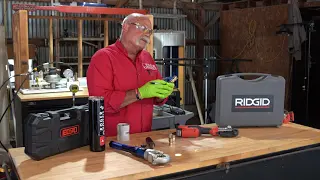Imagine walking into a commercial boiler room expecting to find huge tanks and roaring burners—but instead, you see a sleek wall of tankless water heaters. That’s exactly what happened at the Omni Barton Creek Resort & Spa near Austin, Texas. For decades, large boiler systems were the only real option for heavy hot-water demand—especially in big hotels or resorts with multiple dining outlets, spa facilities, and hundreds of guest rooms.
But as technologies evolve, tankless water heaters have broken into the commercial realm with high-capacity solutions, touting better energy use and minimal downtime. In this post, Roger Wakefield visits the resort and speaks with Aaron, who helped install a bank of tankless units in place of outdated boilers. Below, we’ll break down the resort’s challenges, why they selected tankless, and how the system has performed after several years in operation.
The Boiler Problem
Outdated Equipment
Before the upgrade, the resort relied on conventional boilers—each over 800,000 BTUs. They would superheat water to 140–150°F in a large storage tank, then mix it with cold water to bring it down to the standard 120°F supply for rooms. This process wasted significant energy by heating water only to cool it again.
Issues With Old Boilers:
- Poor Efficiency: Constantly reheating water, whether or not guests were using it.
- Excess Storage: Massive tanks that needed frequent checks, cleaning, and space.
- Limited Redundancy: If one main boiler fails, the entire system suffers.
Space and Venting Constraints
Commercial boilers require clearances for safety and large flues for venting combustion gases. Replacing big tanks often means either upgrading the building’s structural support or customizing large doors to maneuver the equipment in and out.
Why Tankless for a Large Resort?
1. On-Demand Efficiency
Unlike boilers that keep water hot around the clock, tankless units fire up only when guests actually turn on a faucet or shower. This “on-demand” feature slashes standby heat loss and ensures minimal waste. According to Aaron, the system can handle all the resort’s hot-water needs while maintaining consistent temperatures.
2. Modularity and Redundancy
The resort uses multiple tankless units arranged in racks. Each device (or “engine”) senses demand and ramps up as needed. If the entire property is quiet, only a few units run; at peak times, more units kick in automatically.
Advantages:
- Scalable: If one unit needs maintenance, the rest keep working.
- Easier Replacement: Servicing a single module is cheaper and quicker than dealing with a giant boiler.
3. Space-Saving Design
Each pre-assembled tankless rack fits through a standard doorway. Gone are the days of tearing down walls to remove or install huge boilers. The compact form factor also frees up floor space for other equipment or expansions.
4. Strong Service and Engineering Support
By providing the resort’s engineering team with fixture counts and peak demands, the tankless manufacturer (Rinnai, in this case) designed the entire system. They arrived practically “plug-and-play,” which lowered installation hurdles and downtime.
Installation Experience
Straightforward Setup
The units arrived on racks with gas, water, and vent connections. Contractors simply rolled them in, connected to existing gas lines and the building’s manifold system, then vented each appropriately. This meant a switchover with minimal disruption to hotel guests.
Key Steps:
- Sizing: The manufacturer sized the array to handle the resort’s maximum hot-water load.
- Manifold Connections: Linking hot and cold manifolds ensures balanced flow among the tankless units.
- Ventilation: Each rack includes exhaust and intake vents, often run side by side or through the roof.
Zero Downtime for Four Years
Amazingly, the Omni Barton Creek system has had no major outages since day one. They even purchased a “Sensei kit” of spare components but have never had to open it. That level of reliability stands out in commercial environments, where a single boiler breakdown can inconvenience hundreds of guests.
Performance and Cost Savings
Energy Efficiency Gains
With conventional boilers, the resort used to heat water to 140°F, only to blend it down to 120°F. Now each tankless unit precisely delivers 120°F (or whatever set point they choose) on demand. That eliminates constant cycling or “reheating” and drastically cuts natural gas consumption.
Additional Benefits:
- Modulation: Each heater modulates its burner based on flow rate and needed temperature rise. On lighter demand days, the system only uses partial capacity, reducing overhead.
- No T-Stat Overshoot: Traditional boilers might overshoot temperature when cycling; tankless avoids that.
Water Bill Reductions
Although the immediate focus was gas savings, some properties also find they use less overall water because the wait time for hot water is more predictable—if properly installed with recirculation. While not as large a factor as energy, it can still be a bonus.
Maintenance
The resort’s mechanical staff finds routine maintenance is simpler—rather than flushing or cleaning giant tanks, they do periodic flushes on each tankless unit. And if a heat exchanger fails, it’s a matter of replacing one smaller unit, not an entire system.
Why Other Properties Are Following Suit
- Redundancy: Big boiler tank fails? You’re out of luck. Tankless arrays let you swap out or repair one unit without shutting down hot water property-wide.
- Scalability: Adding more rooms or a new wing? You can add an extra rack of tankless heaters rather than investing in an all-new boiler or monstrous storage.
- Engineering Support: Manufacturers provide free consultation, design layout, and guaranteed performance if given accurate data on fixture counts and usage.
- Sustainability Goals: Many hotel chains aim to cut carbon footprints. Tankless systems often meet stricter green standards compared to old-school boilers.
Potential Concerns
Initial Cost: Large tankless arrays can match or exceed the upfront price of a commercial boiler. However, long-term ROI usually tips in favor of tankless thanks to lower energy bills.
Installer Expertise: Not all local plumbing contractors are comfortable with high-volume tankless designs. Make sure your installer has experience with commercial racks or direct support from the manufacturer.
Gas Supply and Venting: Tankless heaters demand significant gas volume at peak loads—plus dedicated venting. Work with an engineer or the manufacturer to confirm your building can accommodate those needs.
Conclusion
For decades, boiler tanks were the only game in town for big hot-water demands. But as the Omni Barton Creek Resort discovered, tankless water heaters can handle hundreds of guest rooms, multiple golf courses, and spa facilities—while delivering impressive energy efficiency and near-zero downtime. Their “all-in” approach switched out bulky boiler tanks for modular racks, saving space, cutting gas costs, and introducing a level of redundancy traditional setups can’t match.
As more hotels, universities, and large commercial sites seek to modernize, this new wave of “big tankless” technology might indeed threaten the dominance of colossal boilers. The future of hot water—both residential and commercial—looks increasingly tankless. With proven reliability, easier maintenance, and strong manufacturer support, it’s no wonder more major properties are making the switch.




